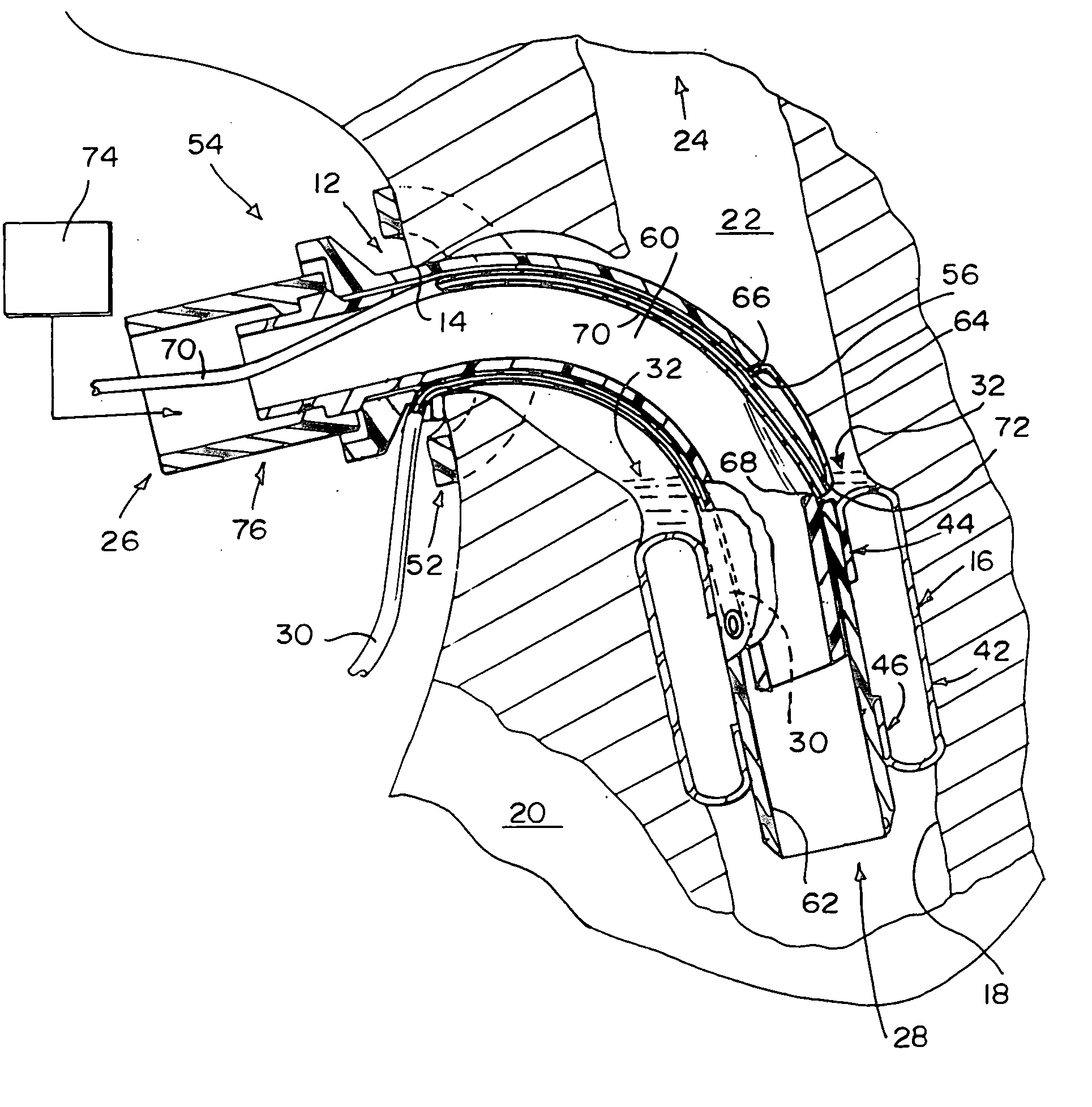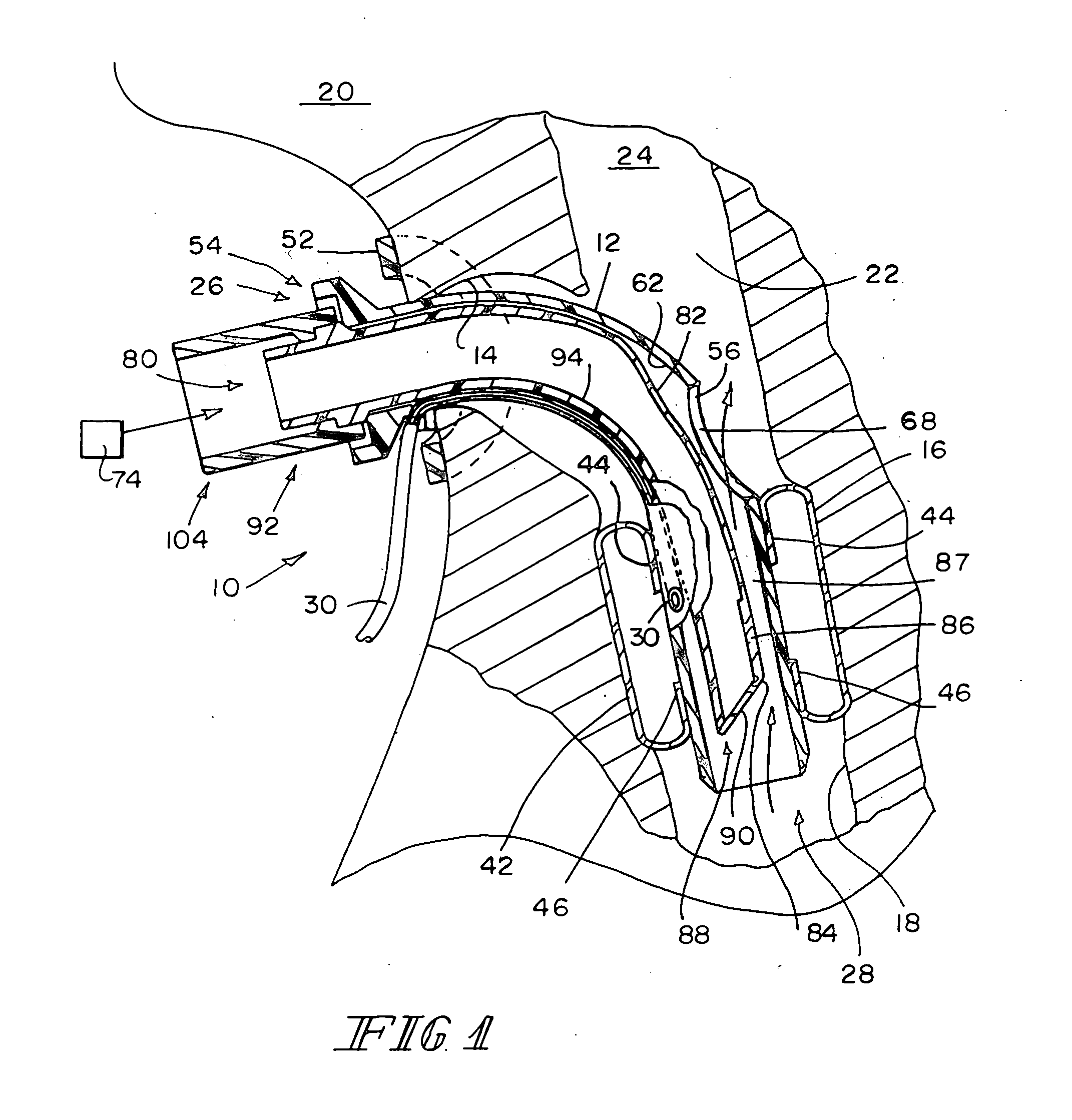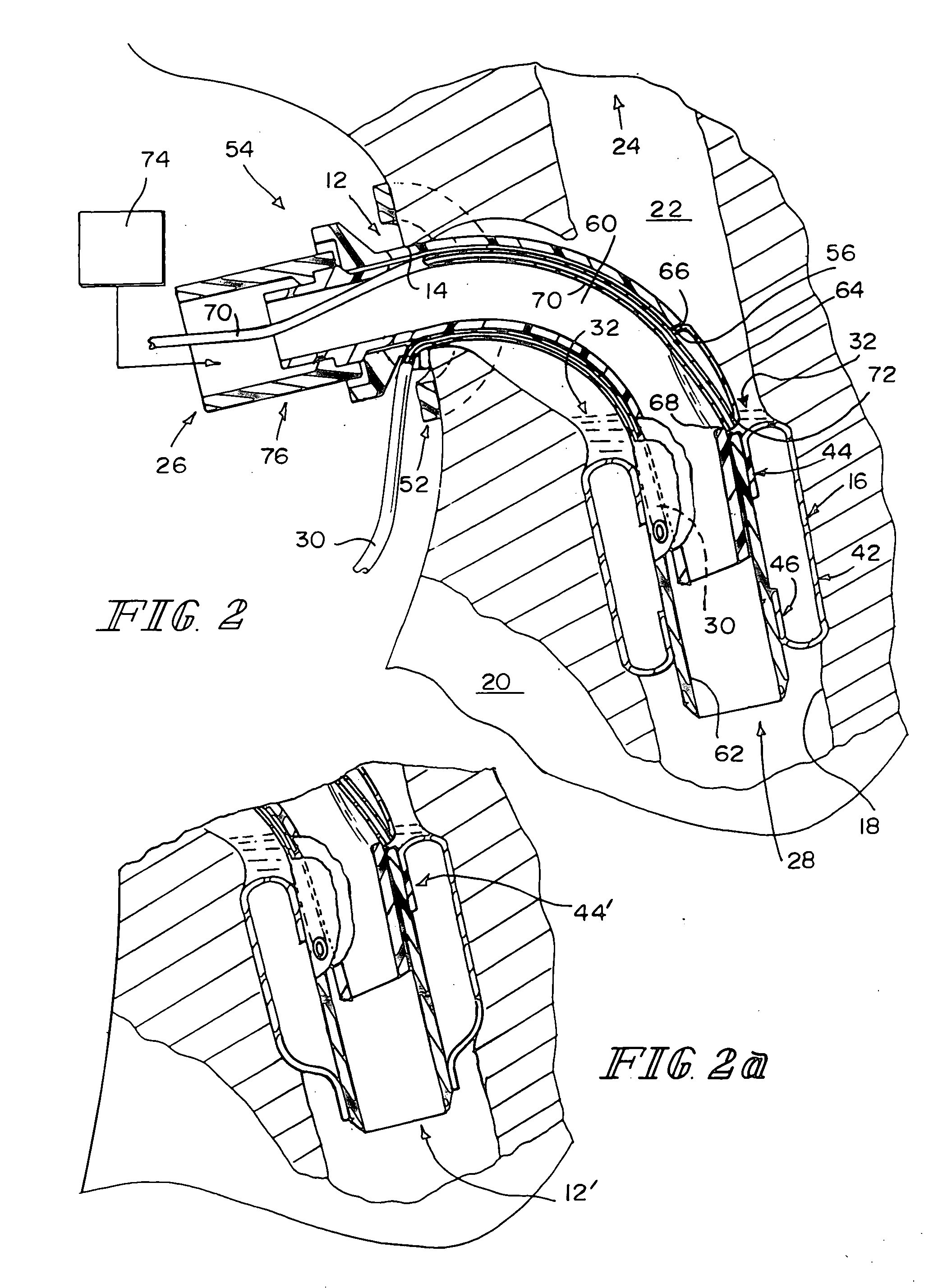Valved fenestrated tracheotomy tube having outer and inner cannulae
a tracheotomy tube and valve technology, applied in the field of valved fenestrated tracheotomy tubes, can solve the problems of no known commercially available device, no better art than, and no widespread us
- Summary
- Abstract
- Description
- Claims
- Application Information
AI Technical Summary
Benefits of technology
Problems solved by technology
Method used
Image
Examples
Embodiment Construction
[0028] Referring now particularly to FIGS. 1 and 2, a speaking tracheotomy tube system 10 includes an outer cannula 12 for insertion into a tracheostoma 14. Outer cannula 12 includes an inflatable cuff 16. Cuff 16 lies in the trachea 18 of a wearer 20 below the passageway 22 upward into the pharynx 24 of the wearer 20. Outer cannula 12 also includes a first port 26 which resides outside the neck of the wearer 20 during use and a second port 28 which resides inside the neck of the wearer 20 below cuff 16 during use. The cuff 16 is inflatable through a line 30 once the outer cannula 12 is in place in the trachea 18 to minimize the passage of secretions 32 from the upper respiratory tract, including pharynx 24, downward into the lungs of the wearer 20. Such secretions 32 pool above the cuff 16 when the cuff 16 is inflated in place. The construction of the cuff 16 as a sleeve 42 with its upper and lower ends 44, 46, respectively, tucked under, rather than extending beyond the cuff 16 up...
PUM
 Login to View More
Login to View More Abstract
Description
Claims
Application Information
 Login to View More
Login to View More - R&D
- Intellectual Property
- Life Sciences
- Materials
- Tech Scout
- Unparalleled Data Quality
- Higher Quality Content
- 60% Fewer Hallucinations
Browse by: Latest US Patents, China's latest patents, Technical Efficacy Thesaurus, Application Domain, Technology Topic, Popular Technical Reports.
© 2025 PatSnap. All rights reserved.Legal|Privacy policy|Modern Slavery Act Transparency Statement|Sitemap|About US| Contact US: help@patsnap.com



